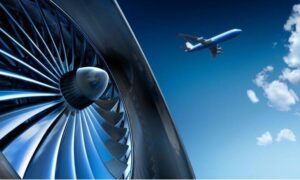Introduction
Embarking on a journey into the vast expanse of aerospace engineering is an exciting and ambitious endeavor. For aspiring aerospace engineers, choosing the right university is a critical first step. In this guide, we’ll explore the top universities in Australia and New Zealand that offer aerospace engineering programs, equipping you with the knowledge to make an informed decision about your academic future.
Australia
1. The University of Sydney
The University of Sydney boasts a world-renowned aerospace engineering program. With cutting-edge research facilities and a faculty composed of industry experts, students gain a solid foundation in aerodynamics, propulsion, and space systems.
Monash University
Monash is a leader in aerospace engineering education, offering a diverse curriculum that covers aircraft design, materials, and avionics. The university’s strong ties with industry provide students with valuable real-world insights.
2. The University of Queensland
The University of Queensland’s aerospace engineering program emphasizes hands-on experience through practical projects and internships. Students benefit from collaboration with industry partners, positioning them for success in the aerospace sector.
3. Royal Melbourne Institute of Technology (RMIT)
RMIT is renowned for its aerospace engineering courses that focus on aeroelasticity, flight dynamics, and space exploration. The university’s state-of-the-art facilities and strong industry connections ensure graduates are well-prepared for the workforce.
4. The University of Adelaide
The University of Adelaide offers a comprehensive aerospace engineering curriculum, covering areas such as aircraft design, propulsion systems, and satellite technology. Students benefit from a multidisciplinary approach that integrates engineering and technology.
New Zealand
1. The University of Auckland
The University of Auckland stands out for its aerospace engineering program, emphasizing research-led teaching. Students delve into topics like aerodynamics, spacecraft dynamics, and satellite communication, guided by experienced faculty.
2. University of Canterbury
With a focus on practical skills and problem-solving, the University of Canterbury’s aerospace engineering program prepares students for the challenges of the aerospace industry. The curriculum covers aerospace materials, structural design, and space mission analysis.
3. Massey University
Massey University offers a dynamic aerospace engineering program that combines theory with hands-on experience. Students engage in projects ranging from drone development to satellite systems, gaining a well-rounded education in aerospace technology.
4. Victoria University of Wellington
Victoria University stands as a hub for aerospace innovation, with a program encompassing aircraft design, propulsion, and space exploration. The university’s strong ties with research institutions and industry provide students with unique opportunities for collaboration.
Choosing the Right Aerospace Program
Selecting the right aerospace program is a pivotal decision that will shape your academic journey and, ultimately, your career in the dynamic field of aerospace engineering. To ensure that you make an informed and strategic choice, consider the following key factors when evaluating aerospace programs:.
1. Accreditation and reputation:
Begin your assessment by checking whether the aerospace program is accredited by relevant authorities. Accreditation ensures that the program meets the industry’s standards and guarantees a quality education. Additionally, research the overall reputation of the university and its aerospace department. Consider factors such as faculty credentials, research contributions, and the institution’s standing in global rankings.
2. Curriculum and specializations:
Evaluate the curriculum of the aerospace program to ensure it aligns with your academic and career goals. A robust curriculum should cover core aerospace engineering principles, including aerodynamics, propulsion, and materials science. Look for programs that offer specializations or elective courses in areas that align with your specific interests, whether it be aeronautics, astronautics, or space systems.
3. Facilities and Resources:
Investigate the facilities and resources available to aerospace students. Aerospace engineering is a hands-on field, and access to well-equipped laboratories, wind tunnels, and simulation tools is crucial for practical learning. State-of-the-art facilities not only enhance your educational experience but also provide opportunities for engaging in cutting-edge research projects.
4. Industry Connections and Internships:
A strong connection with the aerospace industry is a valuable asset for any program. Universities with established relationships with industry partners often offer students opportunities for internships, co-op programs, and industry-sponsored projects. Practical experience in a real-world aerospace setting is invaluable for translating theoretical knowledge into practical skills and building a network within the industry.
5. Alumni Success and Career Services:
Research the career trajectories of alumni from the aerospace program. A program with a track record of producing successful graduates who have secured positions in reputable aerospace companies is a positive indicator of the program’s effectiveness. Additionally, explore the career services offered by the university, including resume workshops, job placement assistance, and networking events with industry professionals.
6. Research Opportunities:
Consider the research opportunities available within the aerospace program. Engaging in research projects allows students to delve deeper into specific areas of interest, work closely with faculty members, and contribute to advancements in aerospace technology. Research experience can be a significant asset when pursuing advanced degrees or entering the workforce.
Global Perspective:
In today’s interconnected world, having a global perspective is essential. Evaluate whether the program offers opportunities for international experiences, such as exchange programs, collaborative research with international institutions, or participation in global aerospace competitions. Exposure to diverse perspectives and challenges will enhance your adaptability and competitiveness in the global aerospace industry.
7. Financial Considerations:
While passion for aerospace is paramount, it’s crucial to consider the financial aspects of your education. Evaluate the cost of tuition, the availability of scholarships or financial aid, and the potential return on investment in terms of career opportunities after graduation.
Conclusion
Embarking on a career in aerospace engineering is an exhilarating journey, and choosing the right university is a crucial decision. The universities mentioned in this guide are at the forefront of aerospace education in Australia and New Zealand, offering programs that blend theoretical knowledge with practical skills. By considering accreditation, curriculum, facilities, industry connections, and alumni success, you can make an informed choice that propels you toward a successful and rewarding career in the aerospace industry.



































